Disparate Impact and it’s Affect on Our Industry
Published on: Monday, April 11th, 2016
HUD has recently released their guidelines on disparate impact and how it will be applied to housing. The premise of the new rules are that the judicial system has churned out disproportionate disadvantages that fall along racial lines. And so, HUD now has in their purview, and will undertake, cases that may show housing screening methods that are inherently biased, wittingly or NOT. Regardless of what we think about this, we as purveyors of residential property need to adjust our procedures to protect ourselves, and ultimately protect those who may be impacted by the outcomes of an unjust legal system.
A lot of my opinion (I’m not a lawyer) is based on a meeting held between the Director and legal council for Family Housing Advisory Services, Inc. held April 7th, 2016. The purpose of the meeting was to both begin a dialogue with specialist in this area and to ultimately help our industry roll out effective policies and procedures.
The guidelines are at this stage fuzzy, to say the least, offering very little direct (black and white) guidance on how to apply screening practices to applicants. However, there are two areas where the law is crystal clear:
- Taking into consideration any criminal issues that are not convictions is illegal. Because charges are not necessarily reflective of what someone has actually done illegally they cannot be considered in the tenant selection process. “…a housing provider who denies housing to persons on the basis of arrests not resulting in conviction cannot prove that the exclusion (denial of housing) actually assists in protecting resident (or presumably neighbor’s) safety and/or property.”
- You may deny applicants based on convictions for illegal manufacture or distribution of illegal drugs. In these instances there may be an argument of disparate impact however this is a clearly written in of This may seem like an area where the disparate impact claim has merit however this is explicitly written in the HUD Guidelines. “Section 807(b)(4) only applies to disparate impact claims based on the denial of housing due to the person’t conviction for drug manufacturing or distribution…”
That’s it as far as I can tell, everything else falls into some hue of gray.
It would seem this guidance is a result of a failed legal system that has churned out an inequitable application of “justice,” ironically. In other words over the decades some crimes are disproportionately more likely to have resulted in convictions against minority groups. Even if that isn’t true it helps get us to the point which is that we need to essentially discount some crimes when considering prospects for a home.
So the questions becomes, which crimes? The simple answer is any that are not “substantial, Legitimate and Nondiscriminatory.” Part of HUD’s mission is to “…build inclusive and sustainable communities free from discrimination” and that is the objective of these new guidelines. Many in our industry consider these kind of rules as “meddling” and overreach however if we take a deep breath we can see that the mission of providing non-discriminatory housing practices has at least some merit.
What HUD is not trying to do is force bad tenants on property owners, and that’s important to understand. And it isn’t easy to see that since our initial reaction is to protect ourselves and our clients from bad tenants. And who no less than an agency largely considered to be against us. The moment this guidance came out we had to take a defensive posture. However we could look at this law in a different light in that it helps us find more qualified occupant that otherwise we may have overlooked.
Moving forward, how do we adjust our practices to reflect the new guidelines?
If we go back to the objective of finding good tenant there are four core attributes of the ideal candidates:
- They pay rent on time,
- They treat the property well,
- They allow neighbors quiet enjoyment and safety
- Safety of our employees who are charged with entering the homes for maintenance activities
- They do not impose undue stress on our normal operation (e.g. unnecessary calls and visits to the office).
We have all been trained to select our tenants blind to race, creed, sexual orientation and gender, and now all of a sudden there is room to make considerations on a case-by-case basis. That’s dangerous. The guidance seems to be making this dangerous allowance with “…a facially-neutral policy or practice that has a discriminatory effect violates the Act if it is not supported by a legally sufficient justification.” Or even more obviously when they write “The determination of whether any particular criminal history-based restriction on housing satisfies step two (I’ll get to that) of the discriminatory effects standard must be made on a case-by-case basis.”
Case-by-case is exactly what we’ve all tried to squeeze out of our systems so we can be left with a blind and generic decision-making matrix. This is a reversal of a generally accepted policy promoted by HUD themselves *Need Citation.* As we try to comply with this standard we are left with no precedence and no detailed guidance, we are essentially left to guess and potentially devastating consequences as we’ve seen in other Fair Housing cases over the decades that led to our initial fear of this Act.
Regardless we have a responsibility to our clients to sift through this and come up with a best practices. The good news is that it’s possible. The bad news is that it may take well intended property managers to be accused of discrimination in court to get there. Undoubtedly there are agencies all over the country trying to be part of a precedent setting case that we will feel is unnecessarly and unfairly punitive for something none of us could have prepared for.
Our meeting concluded that it will be beneficial for property owners and other interested parties to get together to decipher the Act and to reason our way into a best practices document. Actively attempting and growing the practice will probably be something we (you) can use in court to demonstrate a real attempt to offer justice to individuals who would otherwise have been harmed, which can at least protect against a claim of negligence.
We also came out of the meeting thinking we will ultimately have to discover which criminal offenses seem to carry this parasite of tainted justice. If racism is inherent to certain types of convictions then recognizing that will be a good contra account to the injustice that the rulings wrought on us. It may look something like this (incomplete and not heavily researched…used as an example only):
| Felony | Violent | Verdict | Short answer why | Time | Link |
| Aggravated assault &/or battery | Yes | May disqualify | |||
| Arson | Yes | May disqualify | Arsonists do seem to have most of the characterisitcs of a violent criminal and recividism is pretty high which means there is too high of a risk to neighbors. | Over time there seems to be a reduction of recividism so 8 years may be enough time, but this is not much more than a guess. The study cited shows 16% after 7 years. | Scientific research |
| Burglary | No | Do not disqualify | Burglary is a ‘property crime’ and not necessarily violent in and of itself. There is obviously a risk here that we’d like to protect our tenants and neighbors from so to me it seems having a limited timeframe might be a way to mitigate exposure to disparate impact. Property crimes have a ‘retirement age’ much longer than violent offenders which may warrant a longer timeframe to deny an applicant. | 7 years | Scientific research |
| Embezzlement | No | ||||
| Fraud | No | No | This conviction may well demonstrate that the applicant is not trustworthy (may not pay rent). But, how much time should go by before the applicant can be relied on? | ||
| Espionage | No | ||||
| Grand theft | No | ||||
| Illegal drug abuse/sales | No | Do not disqualify | Blacks and hispanics seem to have been convicted at much higher rates than whites. | ACLU | |
| Kidnapping | Yes | ||||
| Murder | Yes | May disqualify | Placing this tenant does in fact present a safety risk. | ||
| Racketeering | Yes | May disqualify | This crime is mostly associated with violent crimes in order to ‘enforce’ illegal arrangements and that can be a threat to our tenants and neighbors. | ||
| Rape | Yes | May disqualify | There does not seem to be a higher propensity of rape among members of minority groups. This should mean then that the category could not be used to claim protection from his Act. | DOJ statistics | |
| Robbery | Yes | May disqualify | This crime necessitates the use of violence or threat and poses a threat to tenants and neighbors. As a violent crime the ‘retirement age’ is something to take into consideration when processing applicants. | 7 years | |
| Tax evasion | No | ||||
| Treason | No | ||||
| Torture | Yes | May disqualify | 7 years | ||
| Sex registry | Yes | May disqualify | Sex offender convictions do not seem to correlate to race. This would mean that it could not be used as an example of discrimination. We can also use the different levels (1, 2, 3) to parse out the ‘severity’ of the crime. |
*Chart updated 4/18/2016
At the end of the day we, property managers, do have a responsibility to our clients. And while this issue is something that needs to be taken seriously it isn’t something that needs to be devastating. Actually, I’d argue it may just be an opportunity we need to help promote a more reasoned rationale for our screening decisions. Maybe, just maybe we won’t have to be so broad brushed anymore just to be on the safe side. That would indeed be a step forward on several fronts. Now it’s just a matter of making it happen.Housing providers are in a precarious situation, but let’s not forget that the hypothesis being tossed around would also say their are quite a few people who have not been treated fairly through no fault of their own. We need to apply a blind matrix approach to discovering who qualifies in our units while at the same time having to incorporate a decision-making process that includes case-by-case consideration apparently. To top it off we, nor does anybody, know what a safe and fair system will look like. We’d be best to get ahead of this one and discover our own best practices sooner rather than later.




